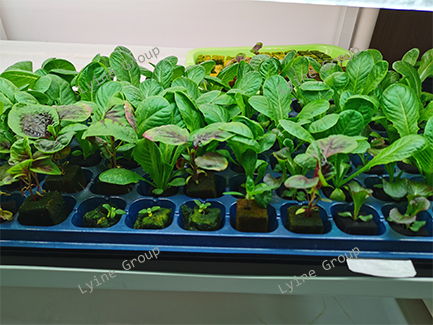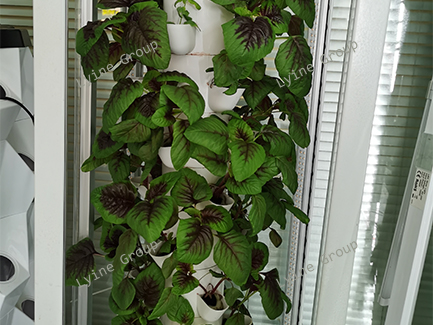Amaranth is a home cooked dish that we often see at our tables in summer. Commonly seen in the market are red amaranth, purple amaranth, and green amaranth. Amaranth contains nutrients such as protein, fat, inorganic salts, sugar, crude fiber, and various vitamins. Among them, leaves and seeds contain high concentrations of lysine, which can supplement the composition defects of amino acids in cereal foods.
In addition, the calcium content of amaranth can reach over 200 mg/100g, while the calcium content of red or purple amaranth can reach up to 400 mg/100g, which is 2-3 times that of spinach. Amaranth has an iron content of over 3 milligrams per 100 grams, making it an outstanding vegetable among many. The nutrients contained in amaranth are essential for maintaining normal physiological functions of the human body, and are very beneficial for the growth and development of adolescents and the health and longevity of the elderly.

Nowadays, hydroponic vegetables are becoming increasingly popular, with low investment costs and high profits. For example, when planting lettuce, it takes about thirty to forty days from planting to harvesting, and it can harvest ten crops a year, with an annual yield of four to five kilograms, resulting in relatively high economic benefits. Hydroponic vegetables can also solve problems such as repeated cropping and soil borne diseases. Amaranth can also be grown through hydroponic cultivation, which is relatively simple. As long as you master the following planting points, you can successfully achieve it.
Key points and precautions for hydroponic cultivation of amaranth:
1. Choose appropriate hydroponic equipment. Amaranth is a relatively easy hydroponic vegetable, so there are many hydroponic planting equipment options available, such as tower systems, NFT hydroponic systems, and EBB and flow tables. Among them, the hydroponic culture tower system is the most commonly used one, which occupies less space and is very time-saving and labor-saving in automated operation, so it is deeply loved by family planting.
2. Sowing. Soil cultivated amaranth is generally sown with dry seeds. Hydroponic cultivation can be carried out using the microgreen system for breeding, and seeds need to maintain about 60% to 70% water. When the temperature is maintained at 20 degrees, it cannot exceed 25 degrees, and the germination rate will be affected, resulting in a decrease in germination rate. Especially if it exceeds 30 degrees, it may not sprout smoothly. After completing the seedling cultivation, it can be transplanted to the hydroponic tower system for hydroponic cultivation.

3. Control the appropriate temperature. Amaranth likes to grow in a warm environment and is heat-resistant. The suitable growth temperature is between 20-27 ℃. When the temperature is below 20 ℃, the growth will slow down. If the temperature is below 10 ℃, seed germination will become difficult. We need to pay special attention after hydroponic breeding and planting.
4. Adequate lighting supply. Amaranth prefers warmth and is more heat-resistant. During planting, it should be given sufficient light, as insufficient light can lead to slow growth.
Although it is a wild vegetable, amaranth has a soft and smooth body, a strong taste, and a sweet taste. It also has the effects of clearing heat, detoxifying, enhancing physical fitness, and promoting development, and is loved by many people. Many people have joined the army of indoor hydroponic amaranth. Although hydroponic amaranth is simple, it also requires mastering the correct methods. After reading this article, everyone can try the correct hydroponic amaranth.



.jpg)





